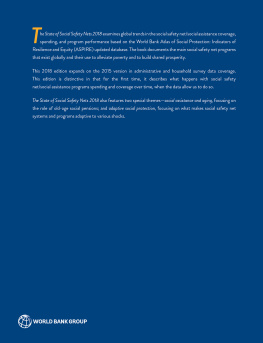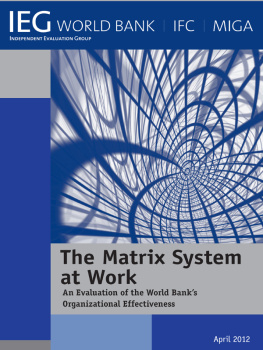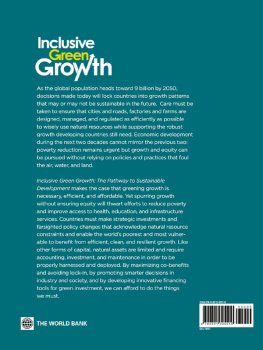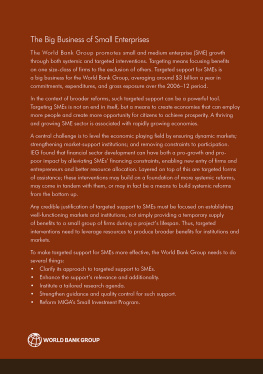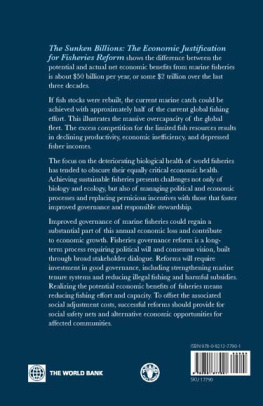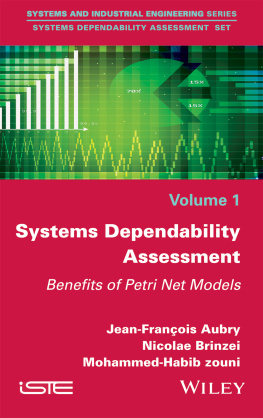World Bank - The State of Social Safety Nets 2018
Here you can read online World Bank - The State of Social Safety Nets 2018 full text of the book (entire story) in english for free. Download pdf and epub, get meaning, cover and reviews about this ebook. City: Washington;D.C, year: 2018, publisher: World Bank Publications;World Bank Group, genre: Politics. Description of the work, (preface) as well as reviews are available. Best literature library LitArk.com created for fans of good reading and offers a wide selection of genres:
Romance novel
Science fiction
Adventure
Detective
Science
History
Home and family
Prose
Art
Politics
Computer
Non-fiction
Religion
Business
Children
Humor
Choose a favorite category and find really read worthwhile books. Enjoy immersion in the world of imagination, feel the emotions of the characters or learn something new for yourself, make an fascinating discovery.
- Book:The State of Social Safety Nets 2018
- Author:
- Publisher:World Bank Publications;World Bank Group
- Genre:
- Year:2018
- City:Washington;D.C
- Rating:5 / 5
- Favourites:Add to favourites
- Your mark:
- 100
- 1
- 2
- 3
- 4
- 5
The State of Social Safety Nets 2018: summary, description and annotation
We offer to read an annotation, description, summary or preface (depends on what the author of the book "The State of Social Safety Nets 2018" wrote himself). If you haven't found the necessary information about the book — write in the comments, we will try to find it.
The State of Social Safety Nets 2018 — read online for free the complete book (whole text) full work
Below is the text of the book, divided by pages. System saving the place of the last page read, allows you to conveniently read the book "The State of Social Safety Nets 2018" online for free, without having to search again every time where you left off. Put a bookmark, and you can go to the page where you finished reading at any time.
Font size:
Interval:
Bookmark:
Environmental Benefits Statement
The World Bank Group is committed to reducing its environmental footprint. In support of this commitment, the Publishing and Knowledge Division leverages electronic publishing options and print-on-demand technology, which is located in regional hubs worldwide. Together, these initiatives enable print runs to be lowered and shipping distances decreased, resulting in reduced paper consumption, chemical use, greenhouse gas emissions, and waste.
The Publishing and Knowledge Division follows the recommended standards for paper use set by the Green Press Initiative. Whenever possible, books are printed on 50 percent to 100 percent postconsumer recycled paper, and at least 50 percent of the fiber in our book paper is either unbleached or bleached using Totally Chlorine Free (TCF), Processed Chlorine Free (PCF), or Enhanced Elemental Chlorine Free (EECF) processes.
More information about the Banks environmental philosophy can be found at http://crinfo.worldbank.org/wbcrinfo/node/4.


2018 International Bank for Reconstruction and Development / The World Bank
1818 H Street NW, Washington, DC 20433
Telephone: 202-473-1000; Internet: www.worldbank.org
Some rights reserved
1 2 3 4 21 20 19 18
This work is a product of the staff of The World Bank with external contributions. The findings, interpretations, and conclusions expressed in this work do not necessarily reflect the views of The World Bank, its Board of Executive Directors, or the governments they represent. The World Bank does not guarantee the accuracy of the data included in this work. The boundaries, colors, denominations, and other information shown on any map in this work do not imply any judgment on the part of The World Bank concerning the legal status of any territory or the endorsement or acceptance of such boundaries.
Nothing herein shall constitute or be considered to be a limitation upon or waiver of the privileges and immunities of The World Bank, all of which are specifically reserved.
Rights and Permissions

This work is available under the Creative Commons Attribution 3.0 IGO license (CC BY 3.0 IGO) http://creativecommons.org/licenses/by/3.0/igo. Under the Creative Commons Attribution license, you are free to copy, distribute, transmit, and adapt this work, including for commercial purposes, under the following conditions:
AttributionPlease cite the work as follows: World Bank. 2018. The State of Social Safety Nets 2018. Washington, DC: World Bank. doi:10.1596/978-1-4648-1254-5. License: Creative Commons Attribution CC BY 3.0 IGO
TranslationsIf you create a translation of this work, please add the following disclaimer along with the attribution: This translation was not created by The World Bank and should not be considered an official World Bank translation. The World Bank shall not be liable for any content or error in this translation.
AdaptationsIf you create an adaptation of this work, please add the following disclaimer along with the attribution: This is an adaptation of an original work by The World Bank. Views and opinions expressed in the adaptation are the sole responsibility of the author or authors of the adaptation and are not endorsed by The World Bank.
Third-party contentThe World Bank does not necessarily own each component of the content contained within the work. The World Bank therefore does not warrant that the use of any third-party-owned individual component or part contained in the work will not infringe on the rights of those third parties. The risk of claims resulting from such infringement rests solely with you. If you wish to re-use a component of the work, it is your responsibility to determine whether permission is needed for that re-use and to obtain permission from the copyright owner. Examples of components can include, but are not limited to, tables, figures, or images.
All queries on rights and licenses should be addressed to World Bank Publications, The World Bank Group, 1818 H Street NW, Washington, DC 20433, USA; e-mail: pubrights@worldbank.org.
ISBN (print): 978-1-4648-1254-5
ISBN (electronic): 978-1-4648-1255-2
DOI: 10.1596/978-1-4648-1254-5
Cover photo: Third grader from Niger, Mariama. Stephan Gladieu/World Bank. Further permission required for reuse.
Part 1 opener photo: Children in the village of Ambohimahatsinjo, Madagaskar. Mohammad Al-Arief/World Bank. Further permission required for reuse.
Part 2 opener photo: A young girl in an evacuation center, Philippines. Jerome Ascano/World Bank. Further permission required for reuse.
Cover design: Bill Pragluski, Critical Stages, LLC.
Library of Congress Cataloging-in-Publication Data has been requested.
Foreword |
Acknowledgments |
About the Authors |
Structure of the Book |
Abbreviations |
Executive Summary |
PART I ANALYTICS |
Chapter 1 Explaining the Social Safety Nets Data Landscape |
Introduction |
What Are Social Protection and Social Safety Net Interventions? What Is the ASPIRE Classification of Social Safety Net Programs? |
What Is the ASPIRE Database? How Does the ASPIRE Team Collect and Ensure Quality of the Data? What Are the Limitations of the Data? |
How Is the Performance of Social Safety Net Programs Measured? |
Notes |
References |
Chapter 2 Spending on Social Safety Nets |
How Much Do Regions and Countries Spend on Social Safety Nets? |
Do Higher-Income Countries Spend More on Social Safety Nets? |
How Has Spending Changed over Time? |
Which Social Safety Net Instruments Do Countries Fund? |
Notes |
References |
Chapter 3 Analyzing the Performance of Social Safety Net Programs |
Who Is Covered by Social Protection and Labor Programs? |
Which Types of Social Safety Net Programs Cover the Poor? |
What Is the Beneficiary Incidence of Various Social Safety Net Instruments? |
What Are the Benefit Levels of Social Safety Net Programs? |
What Are the Poverty and Inequality Impacts of Social Safety Net Programs? |
What Factors Affect the Impact of Social Safety Net Transfers on Poverty and Inequality? |
Notes |
References |
Highlight 1: Productive Outcomes of Social Safety Net Programs: Evidence from Impact Evaluations in Sub-Saharan Africa |
PART II SPECIAL TOPICS |
Chapter 4 Social Assistance and Aging |
Font size:
Interval:
Bookmark:
Similar books «The State of Social Safety Nets 2018»
Look at similar books to The State of Social Safety Nets 2018. We have selected literature similar in name and meaning in the hope of providing readers with more options to find new, interesting, not yet read works.
Discussion, reviews of the book The State of Social Safety Nets 2018 and just readers' own opinions. Leave your comments, write what you think about the work, its meaning or the main characters. Specify what exactly you liked and what you didn't like, and why you think so.

